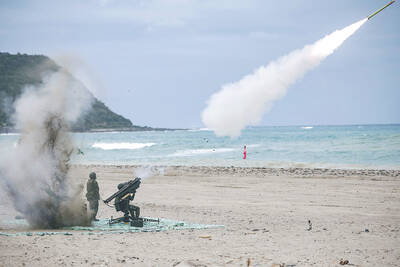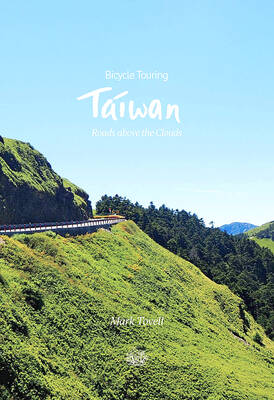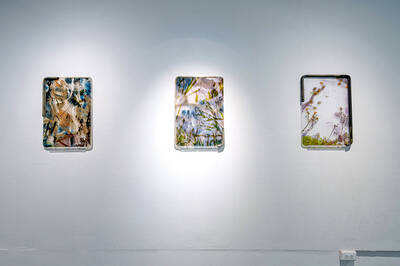The auction of a series of sketches purportedly drawn by an artist at the Japanese internment camp at Manzanar was canceled Tuesday after groups protested it was offensive and immoral to profit off the misery of incarcerated people.
The auction was halted by eBay hours before it was to conclude after company executives met with Japanese American groups who called the sale “hurtful, and a degrading reminder of the mass roundup and incarceration.”
“It’s seems unethical and immoral to put this artwork up on eBay to the highest bidder,” said Shirley Higuchi, author of Setsuko’s Secret: Heart Mountain and the Legacy of the Japanese American Incarceration.

Photo: AP
“When you sell artwork created during an oppressive time for money ... that’s against what our society feels is moral.”
The groups were led by the Japanese American National Museum and Japanese American Citizens League, which also led a successful effort in 2015 to block the auction of a much larger collection of items of internment art in New Jersey. In that case, hundreds of pieces were turned over to museums that commemorate the US internment of more than 110,000 people of Japanese descent for more than three years on the dubious claim they might betray America in the war.
The artwork for sale on eBay were 20 pencil sketches from 1942-43 with the name Matsumura written at the bottom, along with the word Manzanar. The drawings depict mostly what appear to be Japanese landscapes, including one of Mount Fuji. The groups suggested the artist could be Giichi Matsumura, the subject of a series of stories first reported by The Associated Press about a Manzanar incarceree who died in a storm while sketching and painting in the high Sierra in the final days of the war. Several Matsumura families were held at the camp 290 kilometers north of Los Angeles. Lori Matsumura, the granddaughter of Giichi who recently reburied her grandfather’s remains after a hiker unearthed his skeleton in 2019, thought the sketches could be by her late father, Masaru, or another family member. The name printed in block letters was similar to the way her father signed high school reports. She had discovered the auction Monday, day six of the weeklong bidding, and entered an US$82 bid to try to buy the works. The price had climbed to over US$470 when the sale was yanked by eBay.

The online auction site removed the sale because it violated an artifacts policy prohibiting the sale of items from government or protected land, spokeswoman Parmita Choudhury said in an e-mail. Matsumura had a mixed reaction to sale being halted.
“I feel I may never see those sketches again,” she said. “It depends how the seller reacts.”
Higuchi said eBay would contact the seller and put one of the groups in touch to try to obtain the collection.
The seller, listed as sunsetderby in Sharon Springs, New York, said the works came from a former girlfriend in the 1980s. The seller would not name the girlfriend in a follow-up message and said the full name of the artist was unknown. The seller said they weren’t violating eBay’s policies and said other major auction houses had sold similar art. “It’s absolutely preposterous to think that I am doing anything wrong,” the person wrote in response to a question sent through eBay.
But Nancy Ukai, project director at 50Objects.org, said the sale would cause harm by putting a dollar sign on items that come from the trauma and suffering of what she said was essentially a hate crime against Japanese Americans. People of Japanese descent were forced to burn letters and books before being bused to camps and often abandoned artwork and other items when they returned home. “To put on a platform to the highest bidder is like a ransom to reclaim your history,” she said. In a letter to eBay, the groups cited the current wave of attacks on Asian Americans in the US that have escalated recently.
“Sales of our history are never a good thing but are especially hurtful now, when we hear cries to ‘go back to your country,’ exactly what we were told during World War II,” they wrote.

In late October of 1873 the government of Japan decided against sending a military expedition to Korea to force that nation to open trade relations. Across the government supporters of the expedition resigned immediately. The spectacle of revolt by disaffected samurai began to loom over Japanese politics. In January of 1874 disaffected samurai attacked a senior minister in Tokyo. A month later, a group of pro-Korea expedition and anti-foreign elements from Saga prefecture in Kyushu revolted, driven in part by high food prices stemming from poor harvests. Their leader, according to Edward Drea’s classic Japan’s Imperial Army, was a samurai

The following three paragraphs are just some of what the local Chinese-language press is reporting on breathlessly and following every twist and turn with the eagerness of a soap opera fan. For many English-language readers, it probably comes across as incomprehensibly opaque, so bear with me briefly dear reader: To the surprise of many, former pop singer and Democratic Progressive Party (DPP) ex-lawmaker Yu Tien (余天) of the Taiwan Normal Country Promotion Association (TNCPA) at the last minute dropped out of the running for committee chair of the DPP’s New Taipei City chapter, paving the way for DPP legislator Su

It’s hard to know where to begin with Mark Tovell’s Taiwan: Roads Above the Clouds. Having published a travelogue myself, as well as having contributed to several guidebooks, at first glance Tovell’s book appears to inhabit a middle ground — the kind of hard-to-sell nowheresville publishers detest. Leaf through the pages and you’ll find them suffuse with the purple prose best associated with travel literature: “When the sun is low on a warm, clear morning, and with the heat already rising, we stand at the riverside bike path leading south from Sanxia’s old cobble streets.” Hardly the stuff of your

Located down a sideroad in old Wanhua District (萬華區), Waley Art (水谷藝術) has an established reputation for curating some of the more provocative indie art exhibitions in Taipei. And this month is no exception. Beyond the innocuous facade of a shophouse, the full three stories of the gallery space (including the basement) have been taken over by photographs, installation videos and abstract images courtesy of two creatives who hail from the opposite ends of the earth, Taiwan’s Hsu Yi-ting (許懿婷) and Germany’s Benjamin Janzen. “In 2019, I had an art residency in Europe,” Hsu says. “I met Benjamin in the lobby